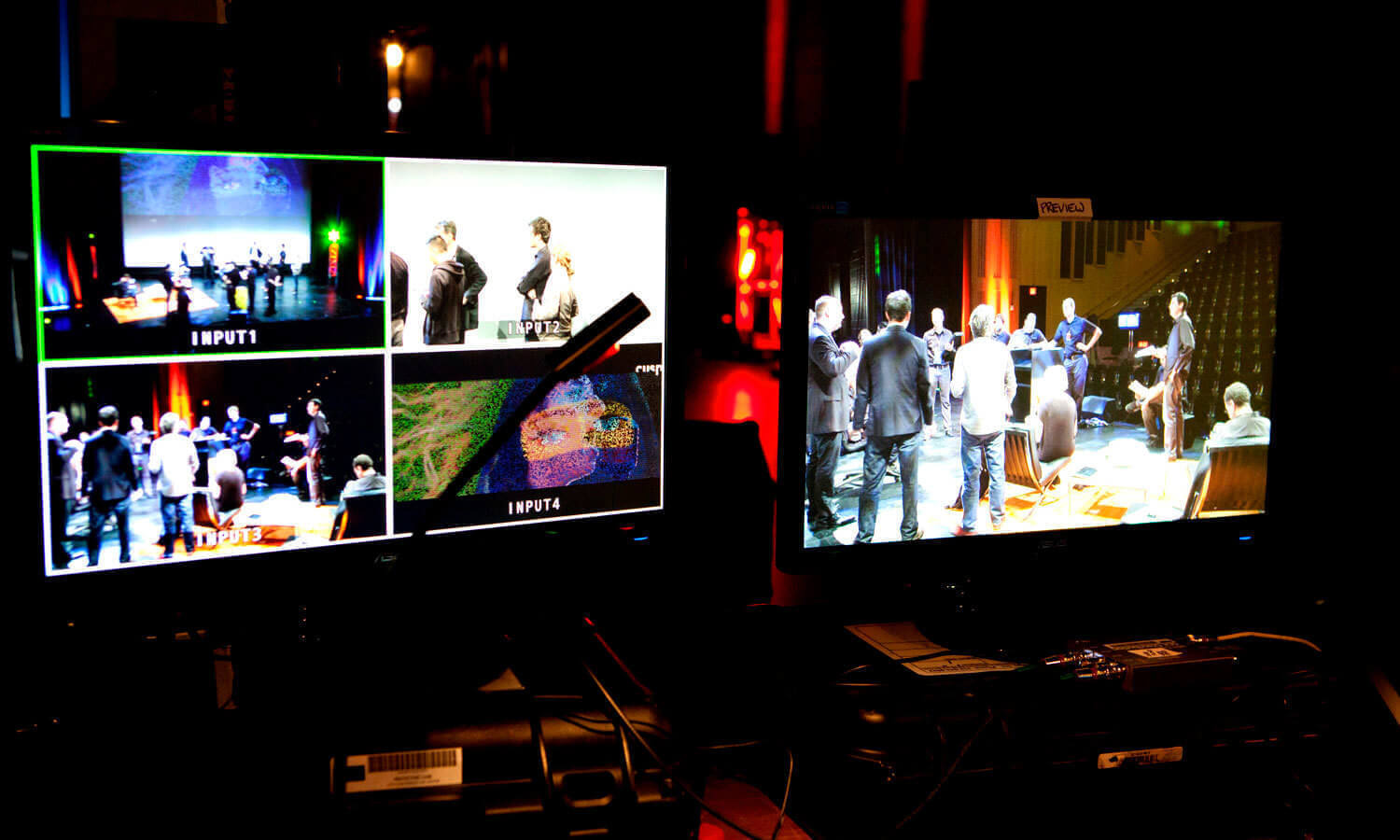What the Cusp?
Design is not just what it looks like and feels like. Design is how it works. —Steve Jobs
After five years of attending the Cusp Conference, I’ve casually gleaned numerous insights from this conference about ‘the design of everything.’ Lofty themes ranging from complexity in patterns, the scale of our universe, change, risk, social responsibility, seeking the right questions and self expression have spun their way into my subconscious and re-emerged throughout the years. But this year was different.
I have entered the eye of the storm. I have seen a different side. And it left me asking “What the Cusp?”
As part of our new partnership with Dave and Kevin (two of the three co-founders of Cusp) my former (and current) business partner Andy and I assumed deeper roles in the conference. In the past we’ve simply shown up at the MCA, grabbed a cup of coffee, mingled a bit, found a seat in the auditorium and prepared to drink from the Cusp fire hose. The conference has never disappointed: the amount of information and inspiration that flies at you is impossible to process in the moment. I’ve always thought of it as like a Christmas morning where you’ve been number one on the nice list the entire year and you wake up to way more than you asked for. It takes considerable time to unwrap the onslaught of Cusp presents, but until now I’ve never given careful consideration to the thoughtfulness of each gift.
Good design is obvious. Great design is transparent. —Joe Sparano
Twenty-six presenters in two days discussing unexpected and unrelated topics. Connections and parallel thinking that always emerge beautifully. Is it coincidence, or sheer genius? I’ve come to learn it’s a bit of both. Cusp presenters are asked to speak for twenty-five minutes on whatever keeps them up at night or gets them up in the morning. They’re given three simple guidelines: don’t try to sell anything to anyone, remember there are young students in the crowd, and don’t be boring. There are no guarantees a speaker won’t be a bust, but there’s something in the formula—framework and structure with intentional serendipity—that just works magic.
In the eye of the storm.
Now that I’ve been behind the scenes—production meetings, spreadsheets, balancing budgets, travel and accommodation coordination, speaker identification and sourcing, sponsorships, volunteer wrangling, writing, email campaigns, database management, web updates, microsites, video production, file prep, food prep, technical prep, backstage juggling and on and on—I’ve got a much deeper understanding of the kind of year-round design and planning required to pull off a well-orchestrated (you might say a transparently-designed) two day event.
Connecting the dots.
Why go to these lengths to produce our own conference? It’s an opportunity to clue young minds in (we’ve all got kids) to the idea that they might be able to design the future instead of just living in it. It’s an opportunity to gather a whole bunch of otherwise-unconnected people together and see what might happen. And it’s an investment in our own intellectual / creative selves. Because we know that if we rely on expected sources of information we become expected, that knowledge and inspiration can be drawn from anywhere, and that collaboration is sharing ideas and being open to new ones. We’re fully aware that associational thinking is a driver of creativity, innovation and unexpected solutions.
So what emerged in past years as an occasional insight from my subconscious, is now a significant and valuable part of my everyday life. The Cusp experience happens all year round. As Cousin Eddie once said, “It’s like the gift that keeps on giving.”
Being inside the Cusp machine confirmed what I always suspected: this gift works because it may be carefully designed from top to bottom, but that design includes an allowance for surprise. Just like life.
